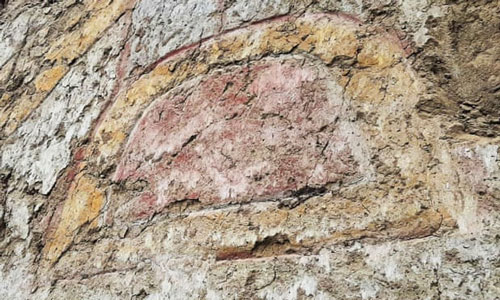Peru
Archaeologists in northern Peru have identified a 3,200-year-old mural painted on the side of an ancient adobe temple that is thought to depict a zoomorphic, knife-wielding spider god associated with rain and fertility.
The mural – applied in ochre, yellow, grey and white paint to the wall of the 15m x 5m mud brick structure in the Virú province of Peru’s La Libertad region – was discovered last year after much of the site was destroyed by local farmers trying to extend their avocado and sugarcane plantations.
Experts believe the shrine was built by the pre-Columbian Cupisnique culture, which developed along Peru’s northern coast more than 3,000 years ago.
The archaeologist Régulo Franco Jordán said the shrine’s strategic location near the river had led researchers to believe it had been a temple dedicated to water deities.
The mural – applied in ochre, yellow, grey and white paint to the wall of the 15m by 5m mud brick structure in the Virú province of Peru’s La Libertad region – was discovered last year.
“What we have here is a shrine that would have been a ceremonial centre thousands of years ago,” he told Peru’s La República newspaper.—Reuters










